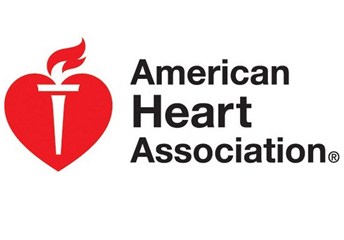This June, in honor of National CPR Week, the American Heart Association is calling on all Americans to learn how to give Hands-Only® CPR by watching a simple one-minute video. Once you have learned CPR, give 5 people you care and love about the same power you just learned to help save a life by passing on that knowledge to them to act quickly in a crisis.
Don’t be afraid; your inability to act cannot help. If you see an unresponsive adult who is not breathing or not breathing normally, call 911 and push hard and fast on the center of the chest.
 WHY LEARN CPR?
WHY LEARN CPR?Cardiac arrests are more common than you think, and they can happen to anyone at any time. More than 383,000 out-of-hospital sudden cardiac arrests occur annually, and 88 percent of those cardiac arrests occur at home. Most victims appear healthy with no known heart disease or other risk factors. Sudden cardiac arrest is not the same as a heart attack. Sudden cardiac arrest happens when the electrical impulses in the heart become rapid or chaotic, which will cause the heart to suddenly stop beating. A heart attack occurs when the blood supply to part of the heart muscle is blocked. A heart attack may cause cardiac arrest.
Sudden Cardiac Arrest? (SCA)
What is an SCA? Sudden Cardiac Arrest (SCA) is a condition in which the heart suddenly
and unexpectedly stops beating. If this happens, blood stops flowing to
the brain and other vital organs. This is different than a Heart Attack or Myocardial Infarction (MI). Regretfully,
70 percent of Americans seem to be very uncomfortable during a cardiac
emergency because they either do not know how to administer CPR
or their training has significantly lapsed. This unforgiving statistic
may some day hit close to home, because home is exactly where 88 percent
of cardiac arrests occur. Put very simply: The life you save with CPR
is mostly likely to be someone you love.
WHO CAN YOU SAVE WITH CPR?
The life you save with CPR is mostly likely to be a loved one. Four out of five cardiac arrests happen at home. Statistically speaking, if called on to administer CPR in an emergency, the life you save is likely to be someone at home: a child, a spouse, a parent or a friend. People with African-American descent are almost twice as likely to experience cardiac arrest at home, work or in another public location than Caucasians, and their survival rates are twice as poor as for Caucasians.
The life you save with CPR is mostly likely to be a loved one. Four out of five cardiac arrests happen at home. Statistically speaking, if called on to administer CPR in an emergency, the life you save is likely to be someone at home: a child, a spouse, a parent or a friend. People with African-American descent are almost twice as likely to experience cardiac arrest at home, work or in another public location than Caucasians, and their survival rates are twice as poor as for Caucasians.
WHY ACT?
Failure to act in a cardiac emergency can lead to unnecessary deaths. High Quality CPR performed by a bystander immediately after sudden cardiac arrest can double or triple a victim’s chance of survival, but only 32 percent of cardiac arrest victims get CPR from a bystander. Painfully, less than 8% percent of people who suffer cardiac arrest outside the hospital survive.
What is the Answer?
The American Heart Association trains more than 12 million people in CPR annually, in order to prepare Americans with the skills they need to perform bystander CPR.
The American Heart Association trains more than 12 million people in CPR annually, in order to prepare Americans with the skills they need to perform bystander CPR.
SEE A VIDEO, SAVE A LIFE
You can prepare yourself to act in an emergency by simply viewing the Hands-Only® CPR instructional video. A study published in the March 8 issue of Circulation: Cardiovascular Quality and Outcomes showed that people who view a CPR instructional video are significantly more likely to attempt life-saving resuscitation. Hands-Only CPR (CPR with just chest compressions) has been proven to be as effective as CPR with breaths in treating adult cardiac arrest victims. The American Heart Association has recommended Hands-Only CPR for adults since 2008.
You can prepare yourself to act in an emergency by simply viewing the Hands-Only® CPR instructional video. A study published in the March 8 issue of Circulation: Cardiovascular Quality and Outcomes showed that people who view a CPR instructional video are significantly more likely to attempt life-saving resuscitation. Hands-Only CPR (CPR with just chest compressions) has been proven to be as effective as CPR with breaths in treating adult cardiac arrest victims. The American Heart Association has recommended Hands-Only CPR for adults since 2008.


Very Nice. Thanks for sharing this informative blogs.
ReplyDelete